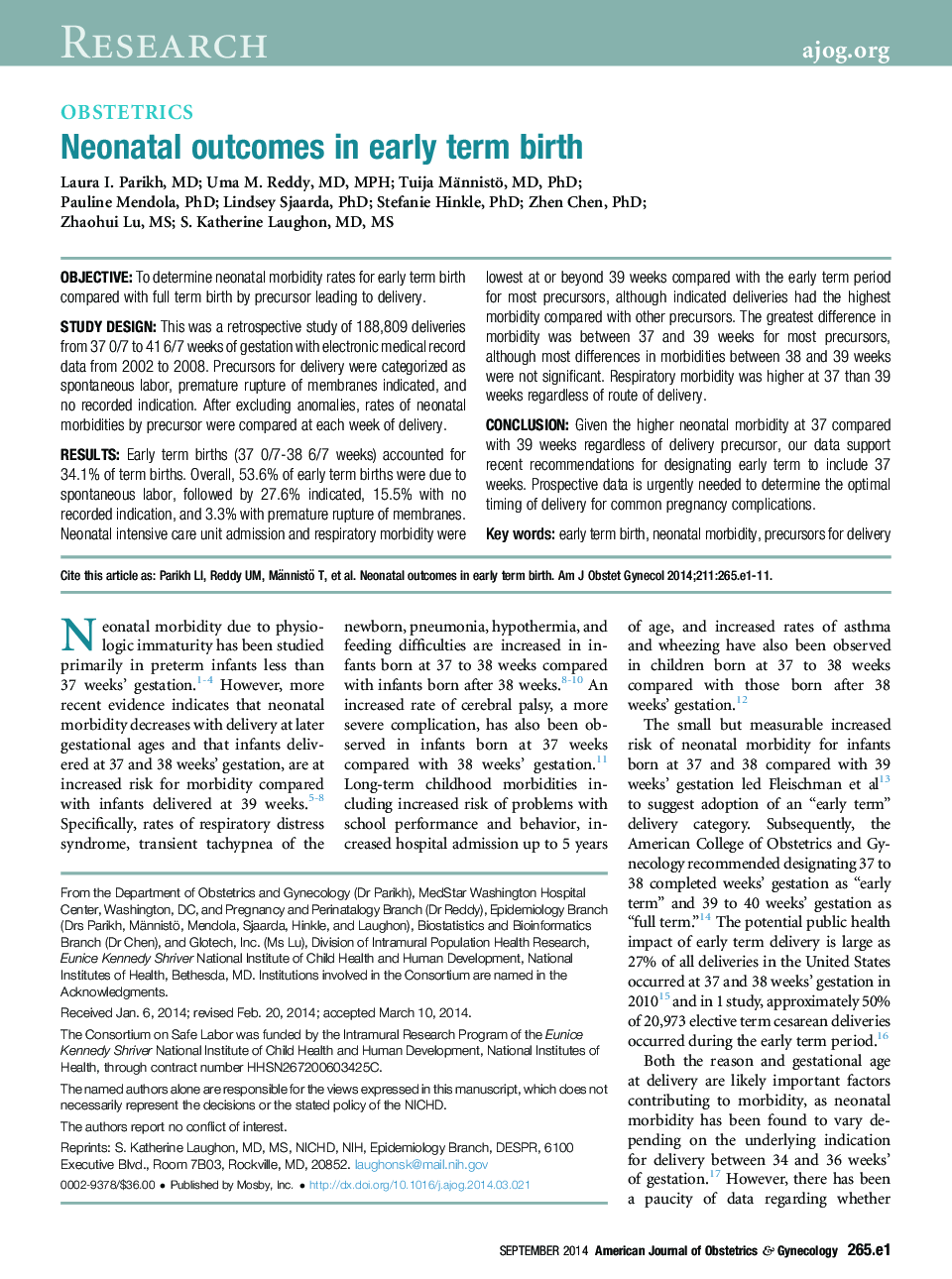| Article ID | Journal | Published Year | Pages | File Type |
|---|---|---|---|---|
| 6145763 | American Journal of Obstetrics and Gynecology | 2014 | 11 Pages |
ObjectiveTo determine neonatal morbidity rates for early term birth compared with full term birth by precursor leading to delivery.Study DesignThis was a retrospective study of 188,809 deliveries from 37 0/7 to 41 6/7 weeks of gestation with electronic medical record data from 2002 to 2008. Precursors for delivery were categorized as spontaneous labor, premature rupture of membranes indicated, and no recorded indication. After excluding anomalies, rates of neonatal morbidities by precursor were compared at each week of delivery.ResultsEarly term births (37 0/7-38 6/7 weeks) accounted for 34.1% of term births. Overall, 53.6% of early term births were due to spontaneous labor, followed by 27.6% indicated, 15.5% with no recorded indication, and 3.3% with premature rupture of membranes. Neonatal intensive care unit admission and respiratory morbidity were lowest at or beyond 39 weeks compared with the early term period for most precursors, although indicated deliveries had the highest morbidity compared with other precursors. The greatest difference in morbidity was between 37 and 39 weeks for most precursors, although most differences in morbidities between 38 and 39 weeks were not significant. Respiratory morbidity was higher at 37 than 39 weeks regardless of route of delivery.ConclusionGiven the higher neonatal morbidity at 37 compared with 39 weeks regardless of delivery precursor, our data support recent recommendations for designating early term to include 37 weeks. Prospective data is urgently needed to determine the optimal timing of delivery for common pregnancy complications.
